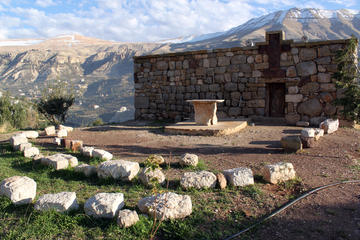Qadisha Valley (Kadisha Valley)
TIME : 2016/2/22 11:55:03

Qadisha Valley (Kadisha Valley)
Steadily flowing from its source inside the concealed Qadisha Grotto, the gentle Qadisha River has sculpted a mystical canyon over 3,000 feet in depth which forms the Qadisha (Holy) Valley. A place of recluse and worship for scores of Christian holy men, this UNESCO World Heritage site has been home to monasteries and hermitages for over a millennium. The Qadisha Valley stretches over several miles of rugged and inhospitable terrain, riddled with shallow caves which have historically served as everything from burial chambers to sanctuaries for isolated worship.
As long ago as the 7th century tribes of Christian worshipers - ranging from Jacobites to Maronites - came to this secluded hideout to escape religious persecution and establish places of solace. Given this pious history, the Qadisha Valley is recognized as one of the most important Christian monastic settlements in the entire world. Just downstream from the historic Lebanese cedar groves is the Qannubin Monastery, the oldest of the four main Maronite houses of worship. In spite of being sacked by Mameluk sultans and outside forces during the Crusades, the Maronite monks nevertheless persevered to maintain their seat of worship deep inside the valley.
At the recently restored monastery of St. Anthony of Quzhaya—an imposing stone edifice which once housed over 300 monks— visitors can tour the place which housed the first printing press to ever grace the Middle East, a relic imported from London in 1584. They can also wander through the library, hermitage cave, and basement museum of the monastery.
Finally, if you’ve toured your share of monasteries and have already enjoyed the cedar groves, Qadisha Valley is the perfect place to head out on a network of well-formed hiking trails to peacefully commune with nature in the same way pilgrims have done for centuries.
